Pomegranate is a delicious fruit that is also very healthy. You can successfully grow pomegranate at home, getting from the seed not only an ornamental plant with beautiful flowers, but also juicy edible fruits. By providing the room with optimal conditions for keeping the plant, it is possible to grow a luxurious inhabitant of the subtropics from the seed, which is usually thrown away. Selection and preparation of planting material
Seed material can be extracted from the fresh fruit of the plant or purchased a package of seeds in a specialized store. In any case, it is advisable to prepare the seeds before sending them to the soil.
Content
The choice of grains for growing pomegranate at home
When choosing a fruit, preference should be given to a large and ripe fruit with a rich red color. It should not have dents, signs of rot and mold, otherwise its contents will sprout poorly. Good germination in hard and smooth seeds of dark ivory color. 4-5 grains are enough. Soft and greenish because of their immaturity will not emerge.
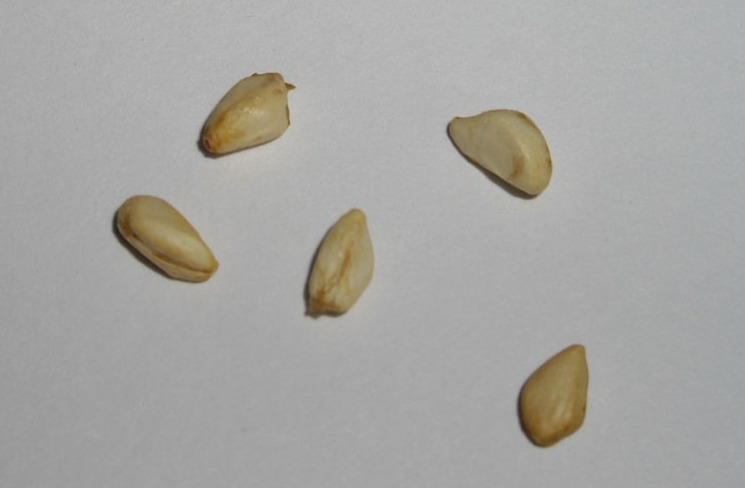
If the seeds are purchased in packaged form, then you should pay attention not only to the name of the variety, but also to the shelf life of the goods.
Preparation of seeds
The bones must be removed from the flesh residues (if any) and washed under running water. It is advisable to rub them in a paper towel to prevent the appearance of rot and mold. Then - place in a saucer or a small bowl of water (the liquid should not completely cover the seeds) and add 2-3 drops of Epin or Zircon, which will increase the immunity of the seeds and will stimulate germination.

Planting material should be soaked in a cool place for about 10-12 hours, during which it is impossible to deprive it of a sufficient amount of oxygen and moisture (if the water evaporates, it must be added, otherwise the bones will dry, crack and become unsuitable for further use).
Choice of capacity and soil
Ready-made store soil, which is intended for citrus fruits, is suitable for home pomegranate. Universal soil mixture is also suitable.
You can prepare the substrate yourself. Need sheet and turf land, peat and coarse sand (in a ratio of 1: 2: 0.5: 0.5). Sand makes the soil loose and soft, which is very important for pomegranate. It should be pre-doused with boiled water. There must be a drainage layer of expanded clay or pebbles, so that excess water does not linger in the pot.
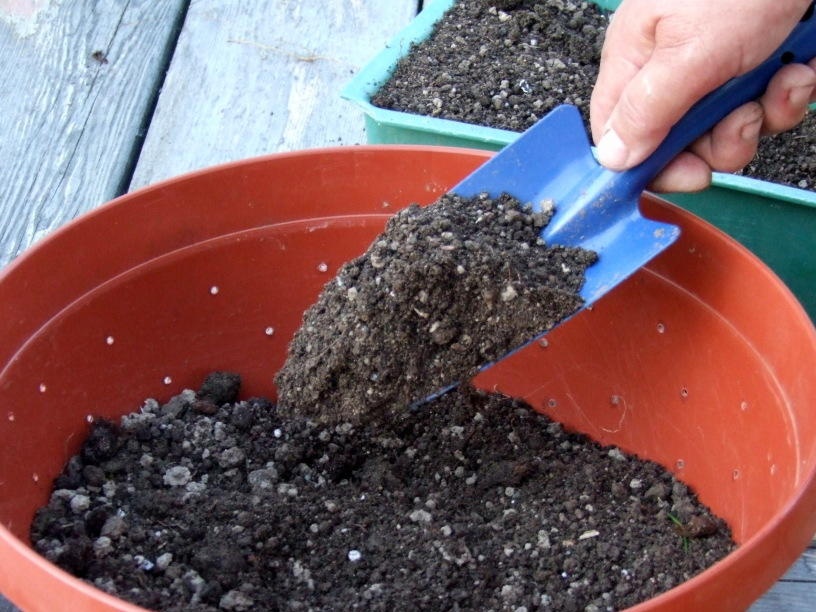
A wide and shallow pot with drainage holes is recommended. A small crowding in the future will even contribute to good flowering. The material of the tank does not matter.
Landing time
The most suitable landing period is from November to March. At this time, pomegranate seeds germinate within 2-3 weeks. If a different season is chosen for the procedure, then grains can peck for a long time - for several months.
Algorithm for growing pomegranate from stone at home
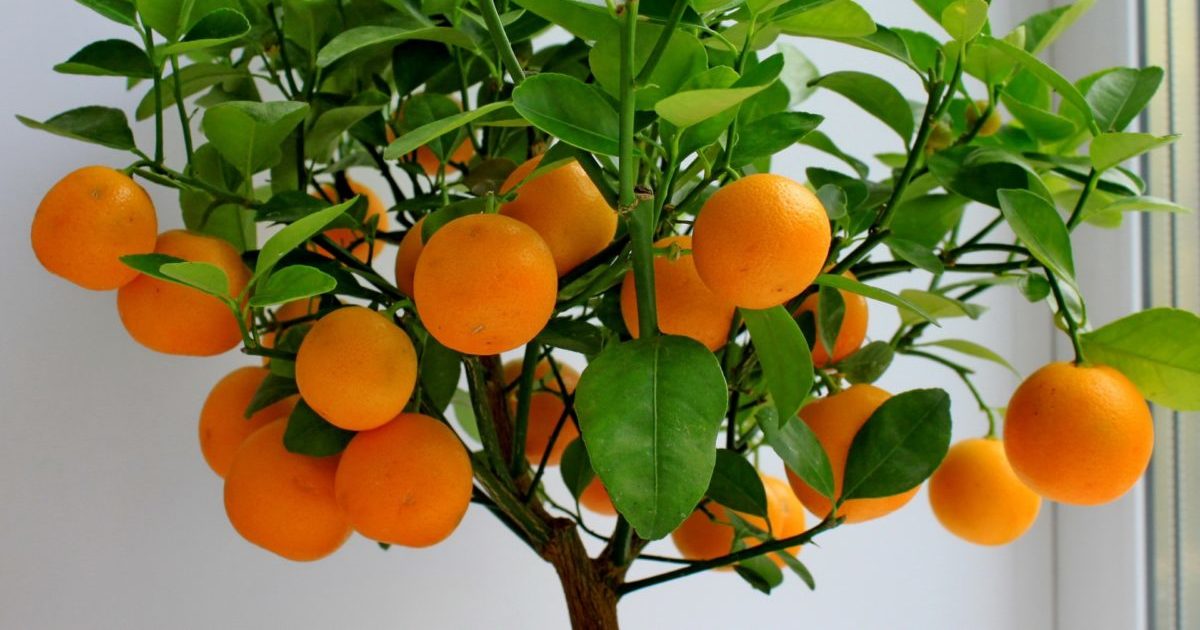 You may be interested in:
You may be interested in:To grow a tree in this way is not difficult and caring for an unpretentious fruit plant is quite simple.
Planting seeds
The substrate in the planting tank should be slightly moistened with settled water. Next - plant the grains evenly to a depth of 1-1.5 cm, sprinkle a little with soil, spray a little, cover with transparent material and place in a warm place (air temperature should be at least 25 ° C).
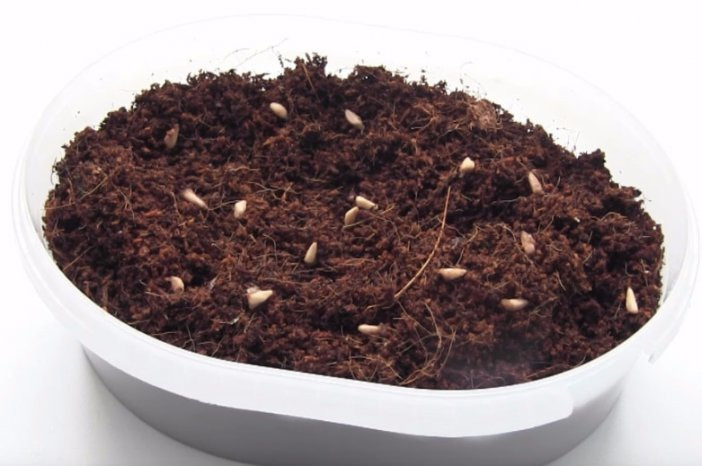
A mini-greenhouse needs to be aired every day and moderately moisten the soil.
Seedling care
When the first seedlings sprout from the soil, the flower container must be placed in a well-lit place. In winter, you will need additional artificial lighting. With a deficit of light, the sprouts will stretch or even stop developing. The soil should not have problems with lack of moisture. Watering by spraying is recommended.
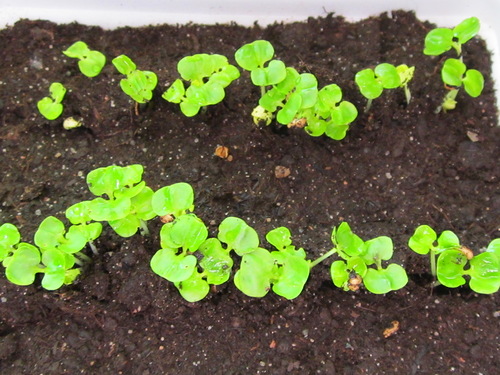
When the seedlings begin to grow and strengthen, the greenhouse must be removed so that it does not interfere with their development. It is better to get rid of weak and damaged shoots.
Instances with 2–3 true leaflets (not cotyledons) need to be dived into pots with a diameter of 7–10 cm. The fourth pair of leaves that has appeared must be pinched so that the pomegranate grows in a couple of shoots. In the phase of the 3rd pair of leaves, these tops should also be removed. This will turn out to be quite a spreading crown. In May, you can take out the pots in the fresh air, but you need to protect the plants from bright sunlight.
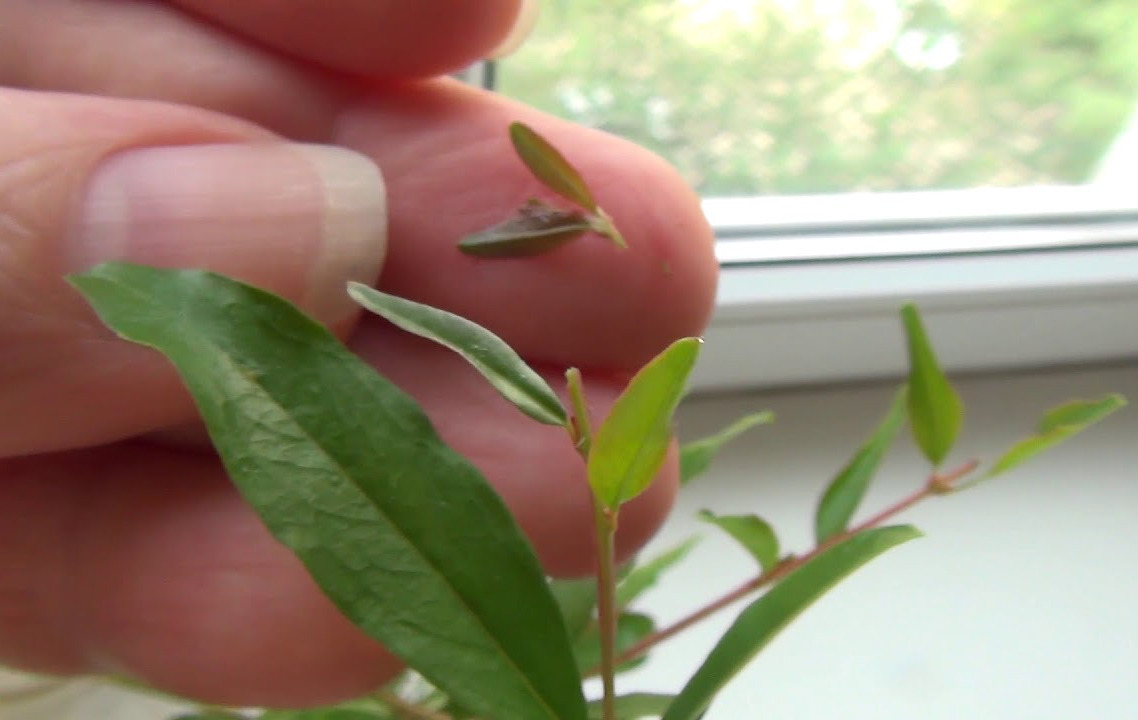
Well-developed seedlings in the autumn months should be transplanted into more spacious containers and put them in a cool place, and in February or March put on the windowsill.
Further care
If the flowers on the tree appeared already in the first year of their life (this can happen at the age of 10 months), it is recommended to remove the flowers, because it has not yet matured. In the 2nd year, you can leave a couple of ovaries.
Pomegranate is demanding in good light. With a lack of light, it will drop leaves. Suitable location near the windows of the south, south-west and south-east directions. Young specimens should be gradually accustomed to active sunlight, so that the foliage does not receive burns.
In autumn (November), pomegranate gets rid of foliage, preparing for a dormant period. Wintering lasts a couple of months. At this time, he needs low temperatures (up to 15 degrees), poor watering and low light, and since February, a pot with a plant can be sent to a warm, bright windowsill and provide sufficient moisture.
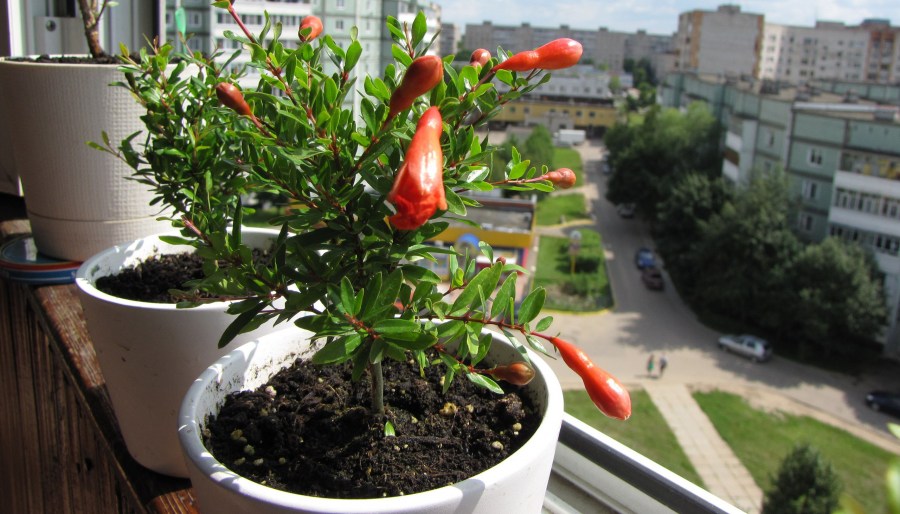
Evergreen dwarf forms of pomegranate can only partially get rid of leaves, but they also need rest in similar conditions.
During the vegetative period, intensive watering is required - at least 1-2 times a week. But excess moisture can hurt - yellow and brown spots will appear on the leaves. In winter, the main thing is to prevent the soil from drying out.
In spring and summer, with a frequency of 2 times a month, it is recommended to feed the plant with complex mineral fertilizer. In the resting period, top dressing is contraindicated. For the safety of eating future fruits, it is recommended to use organic fertilizers. For example, immediately after watering, you can make mullein infusion (concentration 1:10).
In February or March, plants are transplanted by transshipment. The specimens under 5 years old are transplanted into a slightly larger container (2 cm more spacious than the previous one) annually, and the older ones, once every 3-5 years, when the roots of the earth coma are excessively filled with roots. Especially large specimens simply change the top layer of the substrate.
During flowering (late spring-mid-summer), with the help of a cotton swab, pollination can be carried out. It is better to transfer pollen from the flowers of another pomegranate.
What difficulties may arise with home growing
During the care of the plant, mistakes can be made that lead to a violation of the normal functioning of the pomegranate, as well as the appearance of diseases and pests. Appropriate measures should be taken immediately.
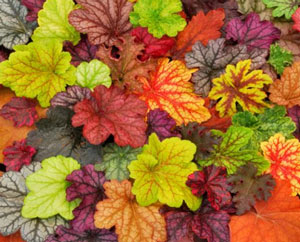 You may be interested in:
You may be interested in:Pests
In a dry room, a spider mite can attack a pomegranate. In order to prevent the appearance of this pest, spraying is carried out. Against the spider mite, the presence of which is indicated by a white spider web and falling leaves, you can use the infusion of garlic, tobacco or onion husks. If the situation is critical, then Fitoverm, Iskra, Aktara, Actellik preparations will help (chemicals should be used carefully, in accordance with the attached instructions). Aphids can be fought in the same ways.
If you have a small number of whiteflies, you can try to remove it manually or with a vacuum cleaner. Then you need to treat the leaves with a soap solution (aphids should also be treated), and cover the earth in a container with plastic wrap. When there are many whitefly butterflies, only chemical plant protection products will be effective (as in the case of the spider mite).
Disease
Sharp temperature fluctuations or high humidity in a room with poor ventilation can cause the appearance of powdery mildew. Pomegranate can become infected from other plants. If the disease is detected at the initial stage of development, it is recommended that a solution of soda ash mixed with soap (5 g per 1 liter of water) is recommended.
To eliminate the infection of large areas of the plant, fungicidal preparations such as Topaz, Skor, Khom should be used. Concentration should not exceed specified by the manufacturer of drugs.
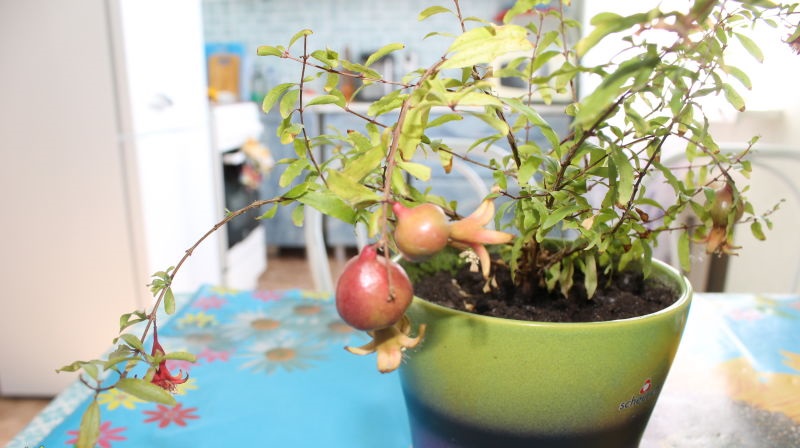
Weakened due to mechanical damage or frostbite, plants are often susceptible to branch cancer. With it, cracks appear on the cortex, and spongy swellings appear along their edges. The affected branches must be disposed of, and the cuts treated with garden var. First of all, avoid injury to various organs of the pomegranate and protect it from frost, and use a sharp and clean tool to trim.
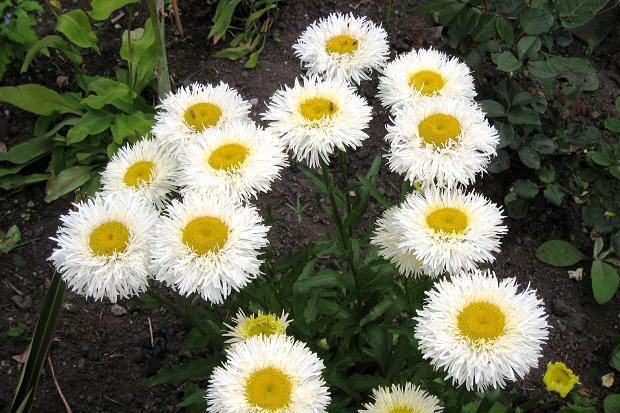 You may be interested in:
You may be interested in:Other difficulties
Improper care may cause certain problems. Among them:
- Yellowing foliage. If no pests were found during the inspection, then perhaps this condition is associated with an increased air temperature in the room or a lack of moisture in the soil (in addition, dark spots form on the leaves).
- "Leaf fall". It can also be caused by pests, moisture deficiency and a hot microclimate. This behavior of the plant can be natural when pomegranate is preparing for a dormant period.
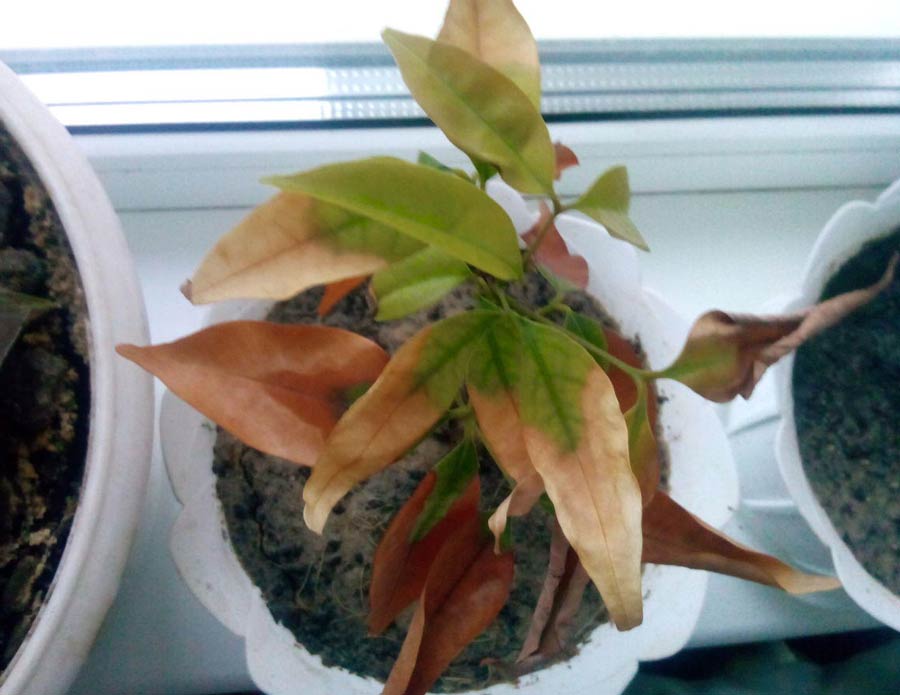
Foliage drying - Yellow and brown spots on leaf blades. In most cases, they arise due to waterlogging of the soil. The plant needs to remove rotten roots, treat them with crushed charcoal and transplant into fresh, loose soil.
- Pomegranate Drying It is observed at low humidity and improper watering. If the soil smells of mold, then the plant is treated the same way as in the previous tip.
Common questions
The main thing in the cultivation of pomegranate seeds is the observance of agricultural measures. It is important to choose the right seed and soil mixture, regularly take care of sowing, provide all the necessary conditions for the emerged seedlings, and then the result will not be long in coming.

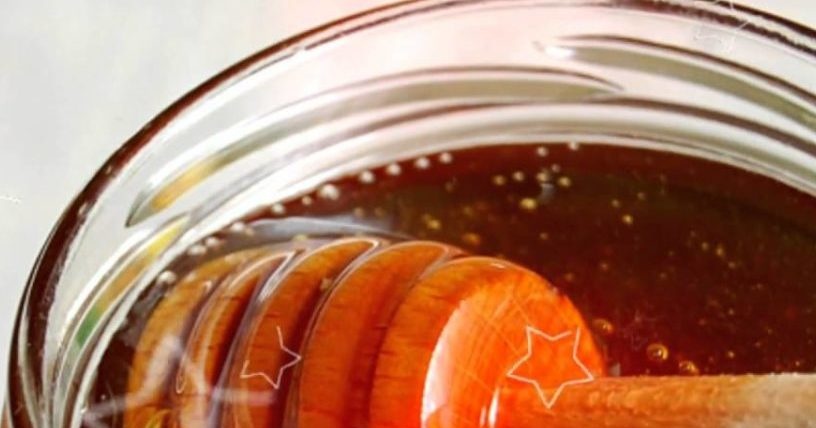
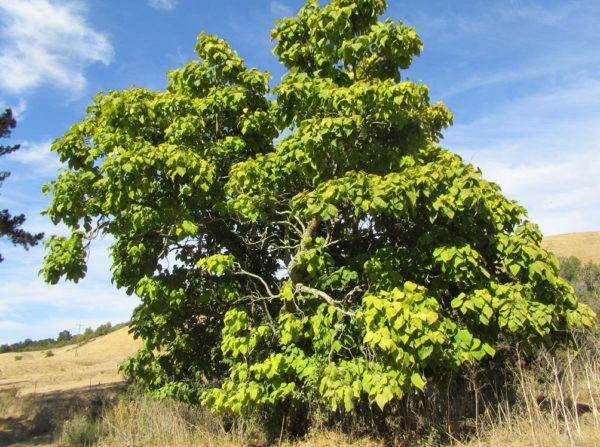
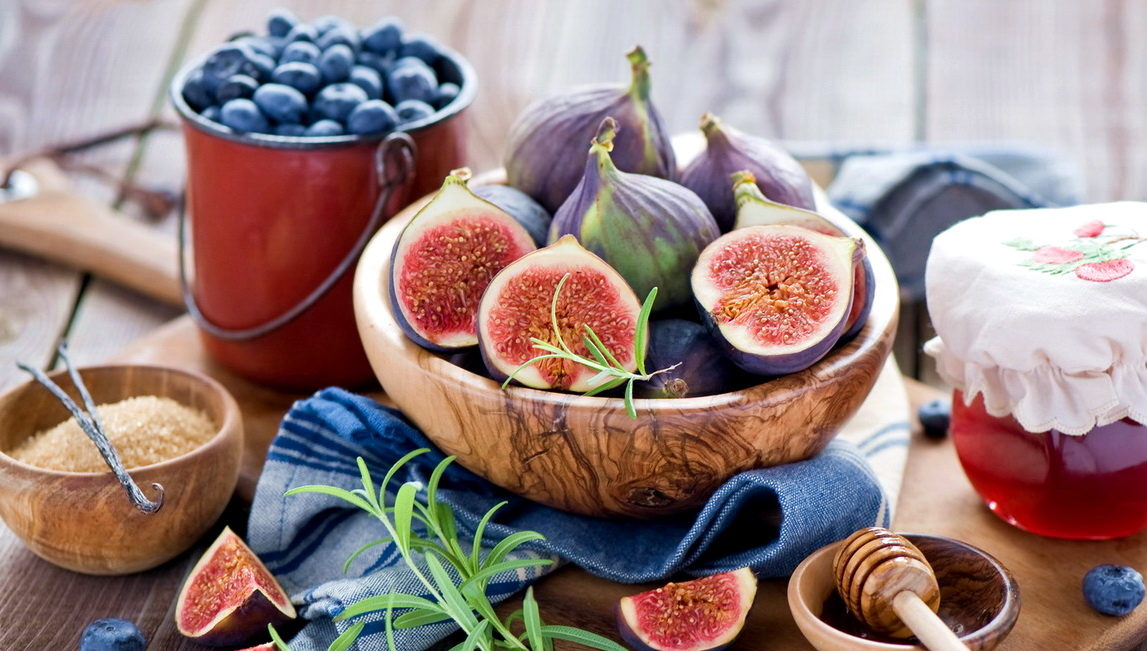
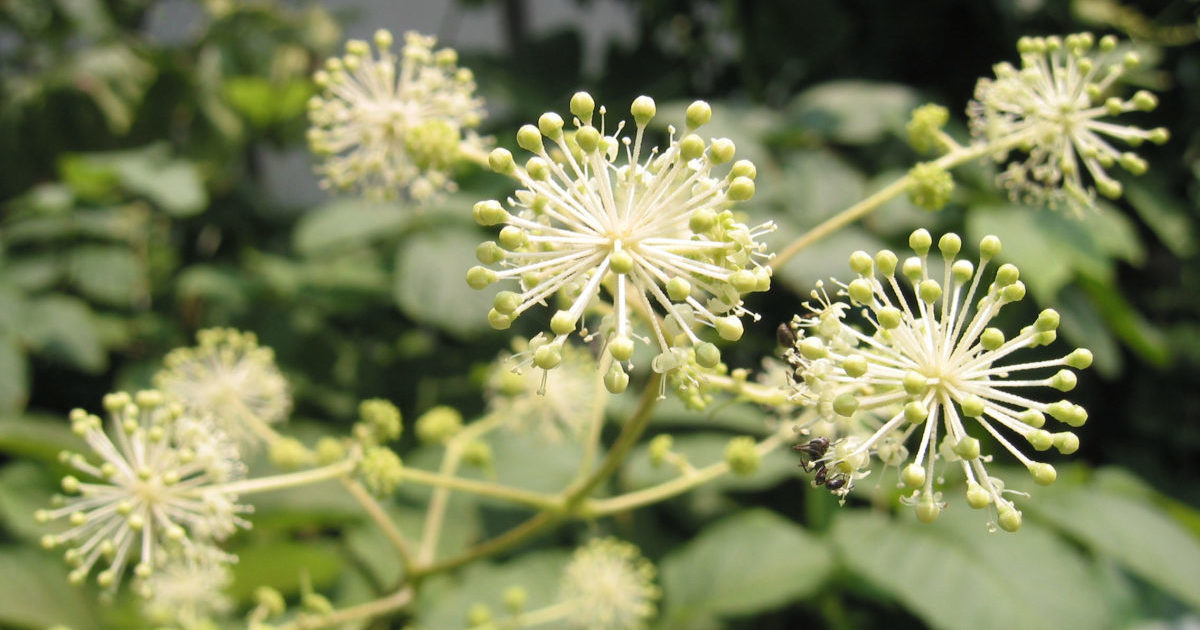 Aralia Manchurian - medicinal properties and contraindications, the use of tinctures in bodybuilding
Aralia Manchurian - medicinal properties and contraindications, the use of tinctures in bodybuilding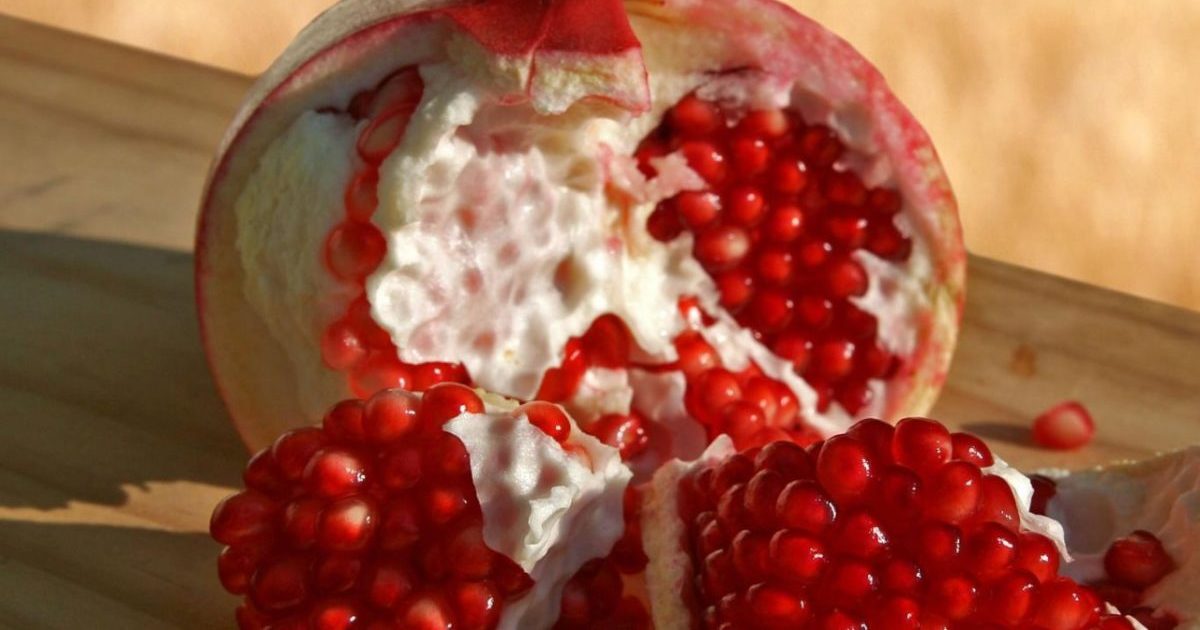 Seedless pomegranate - cutaway appearance, benefits and harms
Seedless pomegranate - cutaway appearance, benefits and harms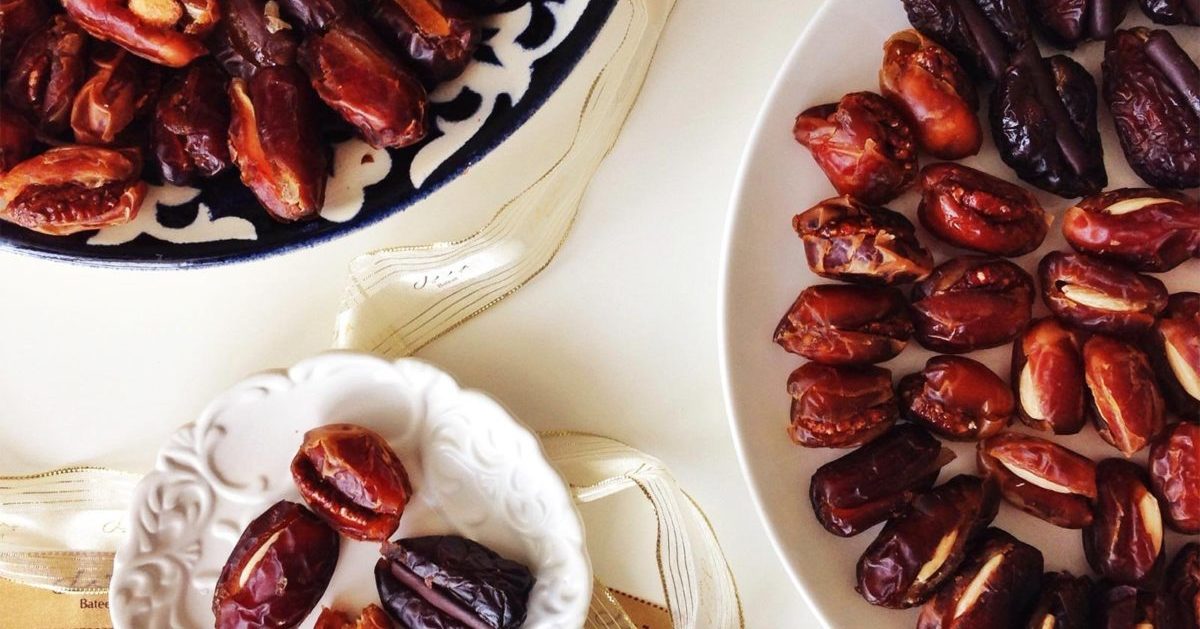 Dates - the benefits and harm to the body, how much you need to eat, properties and calorie content
Dates - the benefits and harm to the body, how much you need to eat, properties and calorie content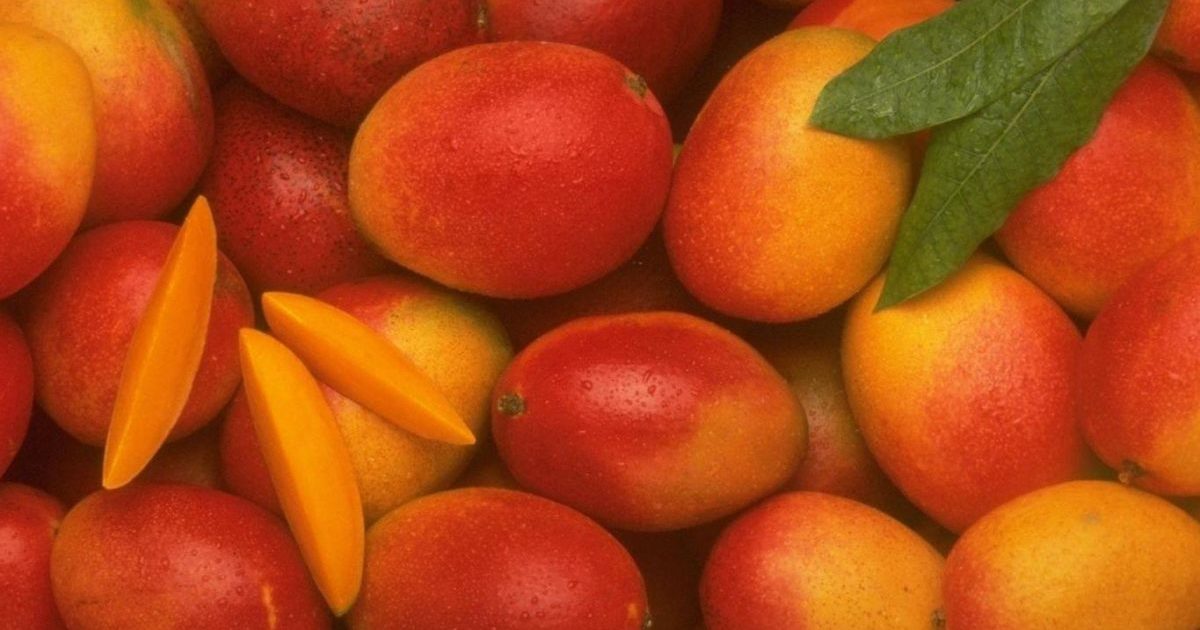 The benefits and harms of mango for the body of women and men - how to eat it?
The benefits and harms of mango for the body of women and men - how to eat it?